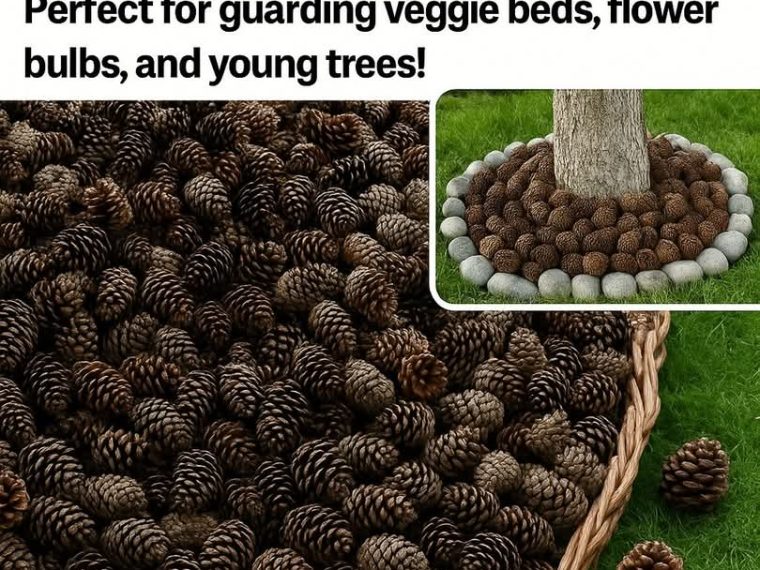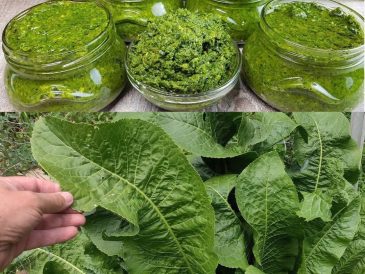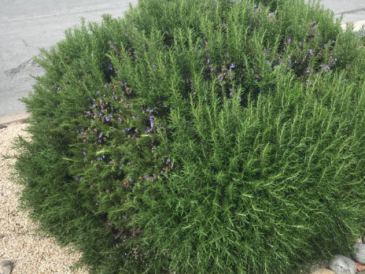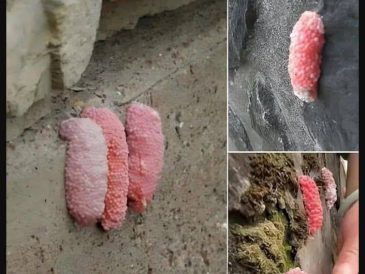When I first started my little backyard garden, I thought my biggest challenge would be remembering to water everything. Turns out, the real troublemakers were the unexpected guests—squirrels digging up my bulbs, cats turning my raised beds into lounging spots, and tiny pests nibbling at new sprouts.
I didn’t want to use chemicals, and fencing everything off felt too harsh. Then I stumbled on a natural solution that was already sitting in my craft bin: pine cones.

Yes, those spiky, rustic little things you see scattered under pine trees? They’re not just for holiday decor. Pine cones can be a surprisingly effective (and charming!) line of defense for your garden.
And the best part? They look great while doing it.
Why Pine Cones Work as Garden Guardians?
Let’s break it down. Pine cones are naturally tough and spiky. For us, they’re just a bit pokey. But for soft-pawed animals like squirrels and cats, or even for insects crawling near the soil, pine cones are a rough and uncomfortable terrain to cross.
Imagine walking barefoot across a field of little spikes. That’s what it feels like to a squirrel trying to dig—or a curious cat trying to find a comfy spot to nap.
For pests like slugs and some beetles, pine cones form a dry, scratchy surface they tend to avoid.
It’s nature’s version of barbed wire—only prettier and a lot more eco-friendly.
How I Started Using Pine Cones in the Garden?
The idea first came to me after a particularly annoying afternoon when I found all my young tulips dug up. I remembered my grandmother used pine cones to line her flower beds.
So, I gathered a bucketful from a nearby park, gave them a rinse, and started placing them around my plants.
Here’s how I did it:
- Clean the pine cones. I shook off dirt and bugs, then gave them a quick rinse and let them dry in the sun.
- Create a ring. Around my more vulnerable plants, I formed a gentle circle of pine cones, with the spikiest sides facing up.
- Layer for effect. In wider beds, I scattered them densely like a mulch.
Within days, I noticed fewer disturbances. No more freshly dug holes, and fewer nibbled leaves. And the beds? They looked rustic and beautiful, like a forest had gently touched down.
Where Pine Cones Work Best?
From experience, here are the spots where pine cones shine:
- Around seedlings and delicate new sprouts.
- At the base of fruiting plants (like strawberries and tomatoes).
- In raised beds where cats tend to jump in.
- Around bulb plantings (especially in fall).
- Along the edge of container gardens.
A Few Extra Tips
Want to make the most of your pine cone defense line? Here are some things I’ve learned:
- Use enough. One or two cones won’t do much. You want to create a barrier that actually deters movement.
- Refresh the layout. If cones get blown away or buried under leaves, just re-place them.
- Keep them dry. Wet cones can get moldy. If it rains a lot, spread them out to dry every now and then.
- Mix with other deterrents. I sometimes sprinkle crushed eggshells or use scent-based repellents (like citrus peels) in combination.
- Choose natural cones. Avoid painted or glittered cones from craft stores—they can contain chemicals that aren’t plant-friendly.
Unexpected Bonus: Pine Cones as Mulch
Besides being a natural pest barrier, pine cones act a bit like mulch:
- They help retain moisture in the soil.
- They reduce weed growth.
- They slowly break down and enrich the soil over time.
Plus, they don’t blow away as easily as leaves, and they add texture and dimension to garden beds.
A Note on Style
What I love most—aside from their usefulness—is how good pine cones look. They bring a woodland feel to my garden beds, like nature is giving its own little decorative touch. In fall, I add a few gourds and small pumpkins nearby.
In spring, I weave in fresh moss or fallen blossoms.
It’s practical and pretty.
What About the Critters?
You might wonder: do pine cones hurt animals? Not really. They’re not dangerous—just uncomfortable. Cats might jump in once, feel the sharp surprise, and move on.
Squirrels will usually pick easier spots to dig. And pests will often bypass your pine cone patch altogether.
It’s not about hurting—just gently discouraging.
Other Natural Pest Deterrents I Love
In case you want to build a full gentle-defense system, here are a few more things I pair with pine cones:
- Citrus peels to deter cats and insects
- Herbs like lavender, rosemary, and mint for their strong scents
- Coffee grounds to keep slugs away
- Copper tape around pots to stop snails
But time and again, pine cones are my favorite—simple, sustainable, and endlessly available.
The Power of Simple Things
There’s something deeply satisfying about finding a solution that’s both beautiful and kind. Pine cones, to me, are a reminder that nature often gives us what we need—if we just know how to use it.
These days, I collect them every season. I keep a basket in the shed. And whenever I see a plant that needs a little extra protection, I reach for a pine cone—not a spray bottle.
So next time you’re out for a walk and spot a pine tree, gather a few cones. Try them in your garden. Watch how even the smallest things can make a big difference.
And if you hear less digging, see fewer holes, and catch your cat napping outside the raised bed? You’ll know your pine cone magic is working.




